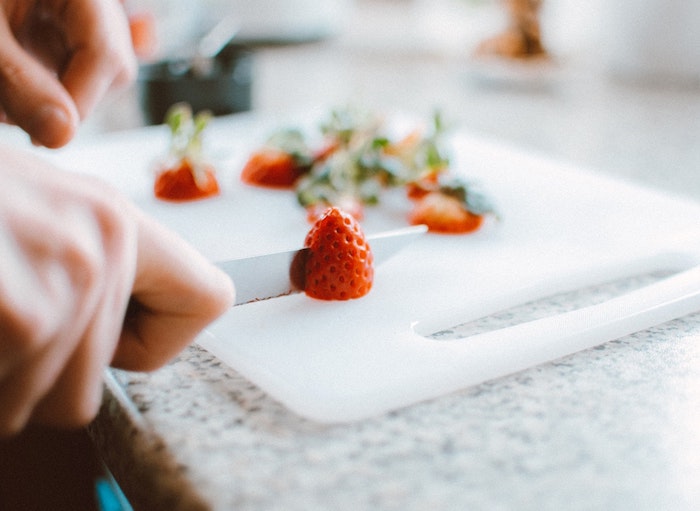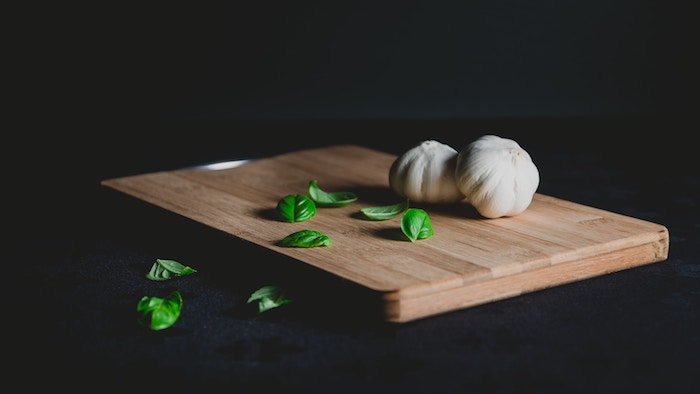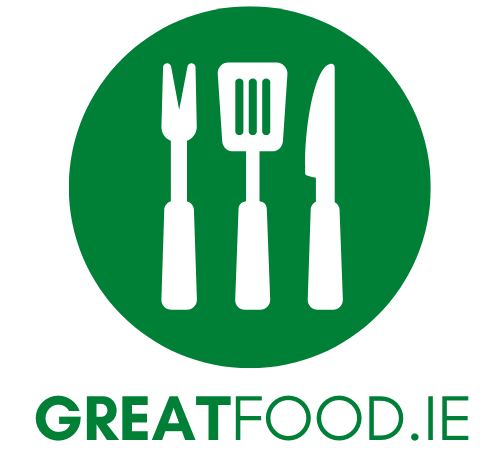There is a lot of debate about whether wood or plastic chopping boards are safer for the kitchen. I find both sides of the argument valid, so I will show you all the information and provide some references for further reading.
It really depends on the job. You could chop brisket, slice an onion, or dice a colossal pumpkin. Have a read of this, and you can decide for yourself what you are more comfortable with.
The Pros of Using a Plastic Chopping Board:

Well Priced and Lightweight
Since plastic is inexpensive, purchasing three, four or even five chopping boards for different purposes is easy. You could use each for completely separate food prep, such as one for raw chicken, one for fruits and vegetables and one for meat.
Sometimes it isn’t possible to put away large, heavy wooden boards. Due to their lightweight plastic, it is also easier to store these cutting boards away.
Easy to Wash
Most plastic chopping boards are dishwasher safe. If the water gets over 190F for a few seconds, your chopping boards will be properly sanitized.
It’s All About the Material
One of the most crucial arguments that favour plastic is that they’re non-porous. This means bacteria is unable to soak into the board. With just hot soapy water, the bacteria can be thoroughly washed off.
This is one of the most powerful ideas in this debate. The authorities also concur with this school of thought and have mandated that all commercial food services use plastic boards.
All Shapes, Sizes & Colors
This may seem like an argument for your home décor it also serves another purpose. It lets others in your kitchen know what boards to use for food.
You could have specific colours for veggies, others for meat and another for poultry. If you have a coloured-coded system, it is easy for everyone to cook in our kitchen without cross-contamination.
The Pros of Using a Wood Chopping Boards

Anti-Microbial Surfaces of Wood
Many of the arguments for wood-chopping boards come from research conducted by Ak, Cliver, and Kaspar in 1994 at the University of California found that wood can possess anti-microbial properties.
These anti-microbial properties appeared to kill surface bacteria within minutes. However, it was later found that the bacteria were drawn into the wood. Then once inside the wood, the bacteria could not reproduce and would eventually die.
End- Grain Chopping Boards
The next point has many facets to it. An end-grain chopping board appears to have self-healing attributes. If you cut on an end grain cutting board, the knife cuts between the wood fibres instead of cutting through them. This means you don’t even up leave any marks or ridges.
For more information on end-grain cutting boards, check this out.
Bacteria Hiding in Marks & Ridges
From the following point, Ak, Cliver and Kaspar’s research found that a wooden board with substantial knife markings was easier to sanitize and wash than a severely knife-marked plastic chopping board.
Since the plastic boards are non-porous, there are many more places for bacteria to collect, breed and contaminate food. Note: Think about replacing your chopping board if it is severely marked.
Longevity and Tradition
People have been using wooden chopping boards for hundreds, if not thousands, years. Some boards are passed down from generation to generation. A wooden chopping board can be rejuvenated with some planning or sanding. It can be suitable for many years to come.
Other Factors to Consider for Wood Vs. Plastic Chopping Boards
While it is hard to choose a clear winner, we can confidently say that you HAVE to stay away from glass and metal chopping boards. Both surfaces will damage your knives and are extremely hard and unsafe.
There is so much opposing information regarding chopping boards that it is difficult to choose a clear “winner.” Some research claims that plastic boards and easier to clean. In contrast, some studies found that wooden boards contained fewer bacteria even after mechanical cleaning on both.
It is down to personal preference. You may have grown up in a household that preferred one style, or maybe you worked in a kitchen and liked to stick by the rules. If you do get one you don’t like, use it, hang it on your wall as a decoration or use it as a serving platter!
Personally, I use both. I like to grab a plastic chopping board for smaller vegetables (not the big boys like pumpkin or cabbage), mainly due to their ease of use and super easy clean-up. If I am cooking up some steaks or brisket (which is more often than not), I like to use a wooden chopping board with a channel 1”-2” from the edge.
I like that the channel catches any juices and stops them from running onto the counter.
What Consideration Should You Make Regarding Knives & Boards?
Due to its rigid surface, your knives will likely dull more quickly on a plastic chopping board. No matter what board you’re using, you should always sharpen your knives before using them. You should also consider how often you use them; if that is frequently (daily), you should have them professionally sharpened at least once a year.
The Key is Sanitation
It doesn’t matter what board you choose; having a proper sanitation routine is vital. This will help you and your loved ones stay safe and avoid cross-contamination. Here are some of my hot tips.
- Always wash and dry with soap and hot water; if you get water over 190F, you can quickly kill the bacteria.
- Try mixing 1 litre of water with 1 tablespoon of bleach and let the mixture sit on the board for several minutes. Then rinse and let air dry.
- You can also try 1-part vinegar to 5 parts water. As with the bleach, let it sit for several minutes, then rinse and let air dry.
- Bacteria love moisture, so keep it to a minimum to help stop growth.
- Try dedicating one cutting board for food without further cooking (fruit, veggies & prepared food) and another for raw food (meat, fish, and poultry). At a minimum, you should have two chopping boards, but I suggest having four.
- Try prepping your veggies, fruit and dry food before your raw items. This makes sanitization much easier.
What is the Best Wood Grain for a Cutting Board?
What is the difference between a “face grain”, “edge grain”, and “end grain” cutting board?
You will hear Chefs talk about face grain vs edge grain vs end grain in terms of their cutting boards and which is better. Each grain has unique features, and it’s up to the customer to determine which they like.
So… what’s the difference? The best way to understand the differences is to consider the “grain” in any piece of wood. Any portion of lumber that woodworkers use has three surfaces that we refer to as 1) face grain, 2) edge grain, and 3) end grain.
You’d typically see the face grain on the “outside” of the board. It’s where you see most of the grain and beauty of a piece of wood. Woodworkers typically use the face grain to make table tops or panels that you might see on cupboard doors.
Edge grain is the “side” of the board. It’s usually the side that woodworkers measure the “thickness” of a board. Finally, the end grain is the end of the board.
Face grain cutting boards are made by glueing the edges of narrow boards of wood together. Edge grain boards are made by glueing the faces of strips of wood so that the edge grain side is now exposed as the cutting surface of the cutting board.
End grain boards are made by cutting the piece of lumber into blocks and glueing the blocks together with the end grain, forming the top surface of the cutting board.
WHICH TYPE IS BETTER?
There is no correct answer here. You just have to weigh the pros and cons of each type of board.
Face Grain: Face grain boards will show knife marks faster than edge grain or end grain boards and are not recommended for heavy chopping use. But, face grain shows the most grain and often is the most striking of all cutting boards.
Edge Grain: Edge grain boards will be more rigid than face grain board and is an excellent first step into wooden cutting boards. Edge grain cutting boards require less upkeep than an end grain cutting board.
Since the grains of the wood are not exposed, the wood will soak up less moisture, making it less likely to warp or crack if not oiled regularly. They may also be thicker than face grain, giving the board more weight and body.
They also do not have to be as comprehensive as an end grain board, which can sometimes become rather heavy. They retain less moisture and are less likely to warp and crack.
End Grain: End-grain cutting boards are durable, can hide knife marks, and will not dull knives as quickly as plastic or glass. End grain wood boards tend to come with a higher price tag as end grain is harder to work with. End grain patterns are unpredictable and difficult to match or replicate, creating a more unique, one-of-a-kind aspect.
Which is better?
I don’t think one is “better” than the other. Because of the grain’s nature, the board’s edge is the strongest part of the board. Most chefs will usually agree an edge grain board is best for chopping since it tends to show knife scratches and marks less. However, because the grain is generally prettier on the face of the board, a face grain board often provides more visual interest in the kitchen. But, the board still provides an excellent surface for cutting and chopping. End grain is by far the strongest and used for proper chopping/butcher blocks, but it has a higher price tag due to the process it takes to make one. In the end, it is up to the customer.
